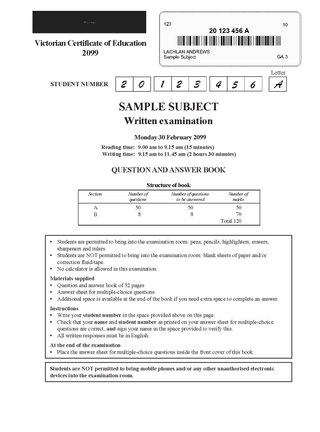Related Research Articles
The Higher School Certificate (HSC) is the credential awarded to secondary school students who successfully complete senior high school level studies in New South Wales and some ACT schools in Australia, as well as some international schools in Singapore, Malaysia, Indonesia, China, and Papua New Guinea. It was first introduced in 1967, with the last major revision coming into effect in 2019. It is currently developed and managed by the NSW Education Standards Authority (NESA).

The Victorian Certificate of Education (VCE) is one credential available to secondary school students who successfully complete year 11 and 12 in the Australian state of Victoria as well as in some international schools in China, Malaysia, Philippines, Timor-Leste, and Vietnam.
The South Australian Certificate of Education (SACE) is awarded to students who have successfully completed their senior secondary schooling in the state of South Australia.
Tenth grade is the tenth year of formal or compulsory education. It is typically the second year of high school. In many parts of the world, students in tenth grade are usually 15 or 16 years of age.

Twelfth grade is the twelfth year of formal or compulsory education. It is typically the final year of secondary school and K–12 in most parts of the world. Students in twelfth grade are usually 17–18 years old. Some countries have a thirteenth grade, while other countries do not have a 12th grade/year at all.
The Universities Admission Index (UAI) was used in New South Wales and the Australian Capital Territory, Australia, as the primary criterion for entry into most undergraduate-entry university programs. It was a number between 0 and 100, occurring in increments of 0.05 and indicating the rounded percentile rank of a student who undertook the Higher School Certificate or ACT Year 12 Certificate with a valid quantity and combination of units of study. It was replaced in N.S.W with the Australian Tertiary Admission Rank (ATAR) in 2009. Prior to the UAI the ACT used its own Tertiary Entrance Rank
The Equivalent National Tertiary Entrance Rank (ENTER) was the national Australian tertiary entrance rank, administered by Universities Australia. It was a percentile ranking, designed to simplify the comparison of entrance levels for students educated in different processes of admission for university applicants from interstate. It was replaced by the Australian Tertiary Admission Rank from 2010.
The Tertiary Entrance Rank (TER) was a tertiary entrance score used in several Australian states, the ACT and the Northern Territory as a tool for selection to universities in Australia. As of 2010, it has been replaced by the Australian Tertiary Admission Rank in all states and territories.
The Overall Position (OP) was a tertiary entrance rank used in Queensland, Australia to guide selection into universities. Like similar systems used throughout the rest of Australia, the OP shows how well a student has performed in their senior secondary studies compared with all other OP-eligible students in Queensland. The system was introduced in 1992 and ended with the 2019 cohort.
The Western Australian Certificate of Education (WACE) is the credential awarded to students who have completed senior secondary education in the state of Western Australia. It is the Western Australian graduation certificate of the Australian Senior Secondary Certificate of Education. Students are required to meet various breadth and depth requirements, achievement standards and literacy and numeracy standards across their final years of schooling. As of the 2020 WACE, there are 106 courses available for students to study. Many WACE students are awarded an Australian Tertiary Admission Rank (ATAR), summarising their results across all areas of study into one ranking for the purposes of university admission. Students may choose from ATAR courses, which count directly towards their ATAR, Vocational Education and Training courses, which are more practical courses and can lead to further vocational opportunities, and, from 2021, General courses, which provide pathways to university, employment, or further vocational education and training. From 2010, the WACE replaced the Tertiary Entrance Exam (TEE), as the standard academic examination for school leavers in Western Australia.

The Tasmanian Certificate of Education (TCE) is the main credential awarded to secondary school students who successfully complete senior high school level studies in Tasmania, Australia. It was introduced in 1992 to replace Tasmania's old "High School Certificate", and partially restructured for 2007.

Tertiary education in Australia is formal education beyond high school in Australia, consisting of both government and private institutions and divided into two sectors; Higher Education and Vocational Education and Training (VET) provided by government-owned TAFEs & private Registered Training Organisations (RTO). Australian Qualifications Framework (AQF), the Australian national education policy, classifies tertiary qualification into 10 levels: level 1 to 4 vocational certificates ; level 5 & 6 undergraduate diploma and advanced diploma; level 6 associate degree; level 7 bachelor degree, level 8 bachelor honours degree & graduate certificates and graduate diplomas; level 9 for master's degree; and level 10 PhD. Most universities are government owned and mostly self-regulated. For other institutes there are two national regulators for tertiary education for registration, recognition and quality assurance of both the "provider institutes" as well as the "individual courses" provided by the providers. Tertiary Education Quality and Standards Agency (TEQSA) regulates institutes which provide education from level 5 or above. Australian Skills Quality Authority (ASQA) regulates institutes which provide education from level 1 to level 6.

The South Australian Tertiary Admissions Centre (SATAC) is the administrative body that processes tertiary course applications for universities in South Australia and the Northern Territory, Australia. It is a member of the Australasian Conference of Tertiary Admission Centres (ACTAC).

Education in Western Australia consists of public and private schools in the state of Western Australia, including public and private universities and TAFE colleges. Public school education is supervised by the Department of Education, which forms part of the Government of Western Australia. The School Curriculum and Standards Authority is an independent statutory authority responsible for developing a curriculum and associated standards in all schools, and for ensuring standards of student achievement, and for the assessment and certification according to those standards.
The Senior Secondary Certificate of Education (SSCE) is the graduation certificate awarded to most students in Australian high schools, and is equivalent to the Advance Placement in North America and the GCE A-Levels of the United Kingdom. Students completing the SSCE are usually aged 16 to 18 and study full-time for two years. In some states adults may gain the certificate through a Technical and Further Education college or other provider.

The Australian Tertiary Admission Rank (ATAR) for all domestic students, or the ATAR-based Combined Rank (CR) for all International Baccalaureate (IB) students, are the primary criteria for determining the Selection Rank (SR) for admission into undergraduate courses in Australian public universities. Domestic Students are students who are Australian or New Zealand citizens, or Australian permanent residents, or the holder of long-term refugee visa. ATAR & CR are not applicable for international students as they must apply directly to each university separately and their SR is calculated by the university. The ATAR is calculated by each state or territory's own state-level Tertiary Admission Center (TAC) for all domestic students studying within their geographical limits. Interstate Domestic Students must apply to the TAC of their respective state. The Selection Rank is calculated by each University separately based on the ATAR or CR as well as additional points for each university's unique criteria such as a student's educational disadvantage or subject performance. ATAR is not a mark, but rather a percentile ranking between 0.00 and 99.95 which shows the student’s relative position compared to all other students in the range of 16 to 20 years old who would have completed their respective year 12 exams in that state in a year.
The Senior External Examination is an annually held Queensland examination, serving as a pathway to tertiary study for students who have been away from studies for a long period of time, who left school before attaining their Queensland Certificate of Education (QCE) or had performed poor in their studies and need to improve their selection rank for university. In addition, high-school students can follow the examination to partake in subjects not offered by their schools, but they will usually have to find private tuition. Senior External Examination is recognized by the Queensland Studies Authority (QSA) and the Queensland Tertiary Admissions Centre (QTAC) who together govern high-school subjects and tertiary admission for Queensland.
The Queensland Certificate of Education (QCE) is the certificate awarded to students completing their secondary schooling in Queensland. The QCE was introduced in 2008, to replace the Senior Certificate. It is currently issued by the Queensland Curriculum and Assessment Authority (QCAA).
The Canberra College is an Australian Capital Territory public school, which educates students from year 11 to year 12. In 2022, Simon Vaughan was appointed Principal, taking over from Michael Battenally.
References
- ↑ "Winners of the 2008 Awards" (PDF). Archived from the original (PDF) on 26 May 2009.
- ↑ Northern Territory Board of Studies (2012). Annual Report 2011 (PDF) (Report). Northern Territory Government. p. 29. ISSN 1033-0844.
- 1 2 3 "About NT Certificate of Education and Training". NT.GOV.AU. 27 July 2015. Retrieved 10 June 2024.
- ↑ "NTCET". South Australian Certificate of Education. Retrieved 10 June 2024.